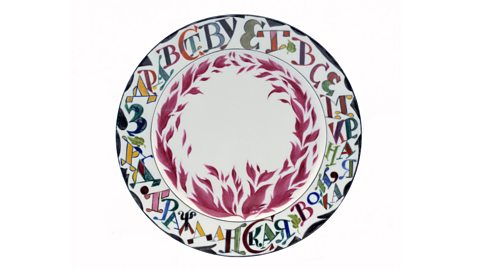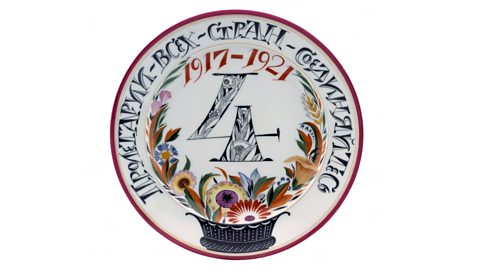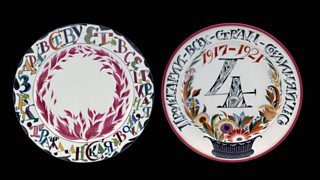The strange beauty of Russia’s 'propaganda plates'
In the mid-19th century, some of the finest porcelain in Europe was to be found in Russia. However, the bulk of the pieces produced by Russia’s Imperial Porcelain Factory were bound not for a commercial market, but for the courts and palaces of the ruling family, the Romanovs...
This all changed in 1917 with the abdication of Tsar Nicholas II and the overthrow of the Tsarist regime. In February 1917, the Imperial Porcelain Factory became the State Porcelain Factory.
Porcelain made for the establishment would now become the porcelain of the people. The factory’s stock of blank, undecorated plates was reappropriated for a communist message.
Long live the world revolution!

Propaganda plates: Long live the world revolution
Ceramicist Claire Curneen tells the strange story of Russian revolutionary porcelain.
This plate was made in 1913 under the Tsarist regime, but remained blank until the factory came under the control of the state. In 1920, the Imperial Factory’s mark was hacked off and replaced by the State Porcelain Factory’s mark: a hammer, sickle and cog.
The colourful, stylised slogan around the outside of the plate reads “Long live the world revolution”, a message emphasised by the dramatic purple flames in the centre. It was hand-painted by the St Petersburg-born artist Varvara Feodorovna Rukavishnikova, who started work at the factory in 1919.
Proletariat of all the world unite!

Propaganda plates: Proletariat of all the world unite
Ceramicist Claire Curneen tells the strange story of Russian revolutionary porcelain.
The slogan around the outside of this plate reads “Proletariat of all the world unite”. Again, it was made in 1913 but remained undecorated until 1921, when it was painted to celebrate the fourth anniversary of the 1917 Revolution (hence the dates and the large number four in the middle).
Almost invisible to the naked eye is a word hidden beneath the painted basket
The handpainted basket of flowers with an ear of wheat suggests a message of prosperity and abundance – even though in truth, much of Russia was at this time wracked by civil war and famine.
Almost invisible to the naked eye is a word, “Livadia”, hidden beneath the painted basket. Livadia was the name of the palace in the Crimea for which the plate was originally bound.
The beginning of a new era
Most propaganda plates were sold in special state shops in St Petersburg and Moscow, with the aim of spreading literacy in Russia – and revolution in the wider world.

The subversive nature of using fine porcelain as a tool for spreading a utopian message attracted the interest of many leading Russian artists of the time, some of whom came to work at the factory.
One such artist was Kasimir Malevich, the renegade painter who .
The idea of the end of one era and the beginning of another was perfect for the State Porcelain Factory and its propaganda messages. The blank whiteness of porcelain and its limitless capacity for change made it the perfect canvas for both the art and the politics of the new Russia.

The images in this article are courtesy of Amgueddfa Cymru – National Museum Wales. Ceramicist Claire Curneen visited the museum to tell the strange story of in , a series from exploring the impact of the Russian Revolution on artists of the period in film, theatre, poetry, dance and beyond.
It’s all part of , a Βι¶ΉΤΌΕΔ Radio 3 season examining the cultural reverberations of the 1917 Russian Revolution in its centenary year. Browse all programmes, concerts, clips and features on the Radio 3 website.
-
![]()
Learn more about Russian revolutionary porcelain with ceramicist Claire Curneen in The Essay.
-
![]()
Authors, artists and historians describe works by inspirational and visionary Russian artists.
-
![]()
How do Russia's latest cultural Γ©migrΓ©s feel about leaving their homeland?
-
![]()
Browse all programmes, concerts, clips and features from this revolutionary season on Βι¶ΉΤΌΕΔ Radio 3.




